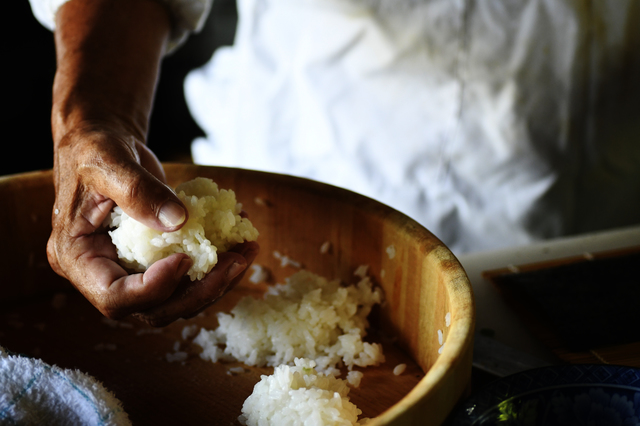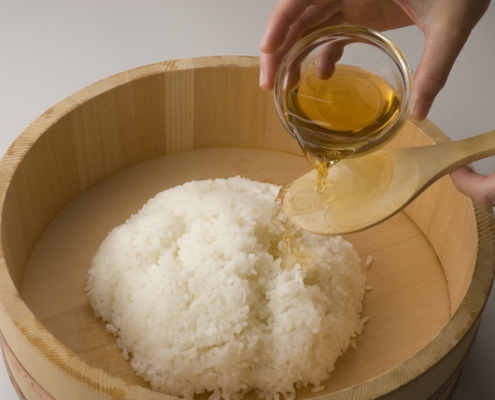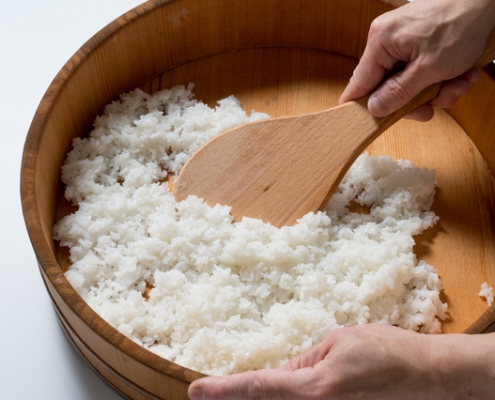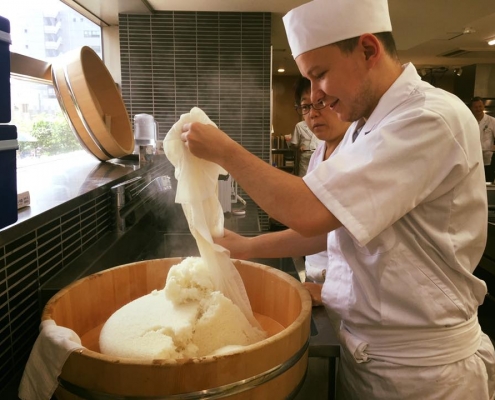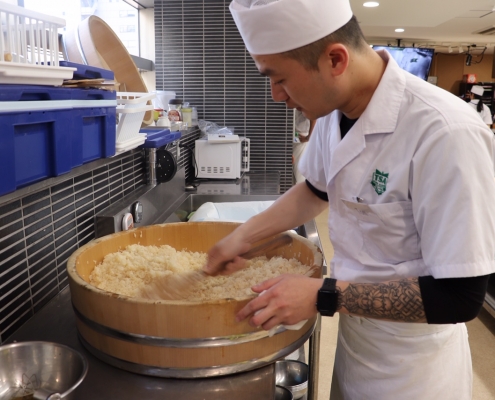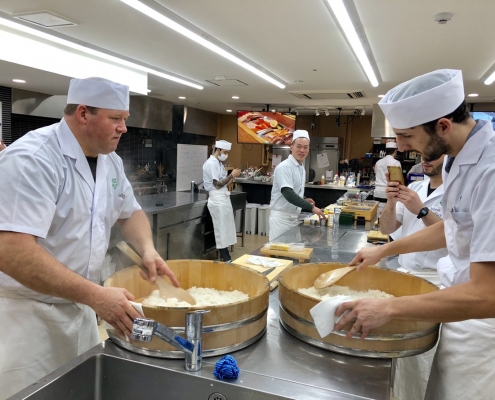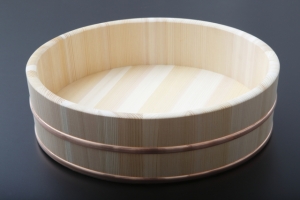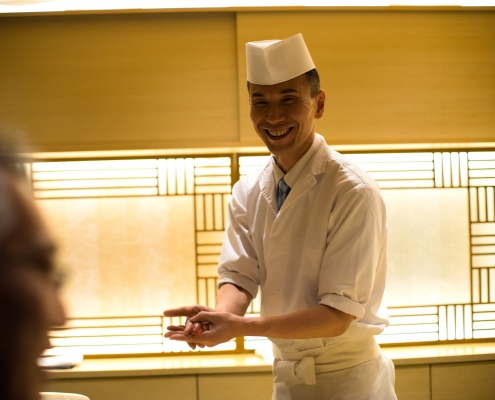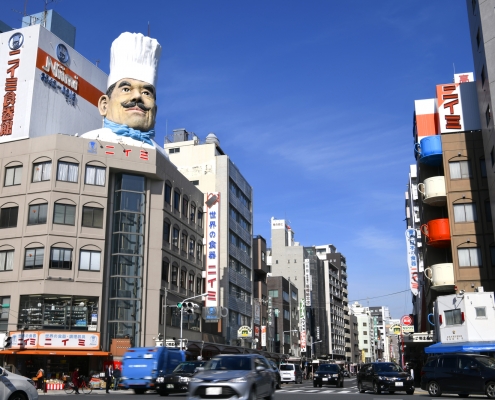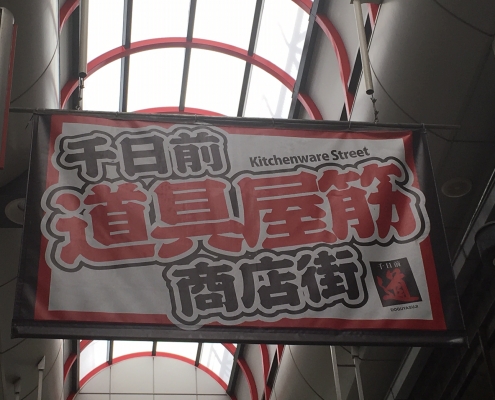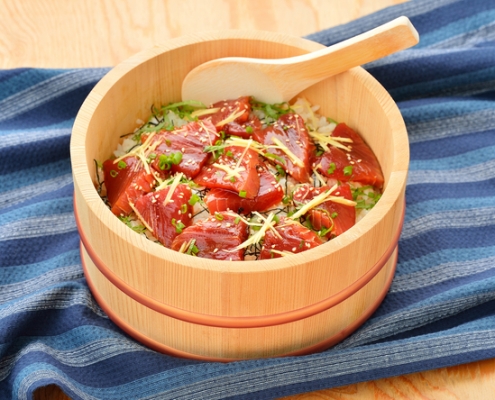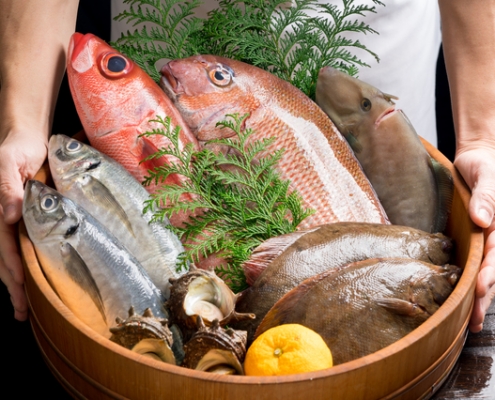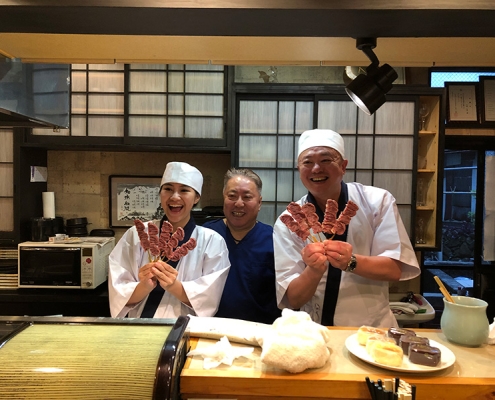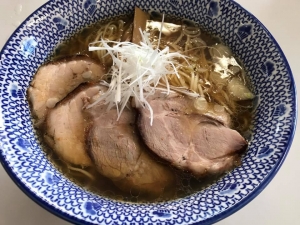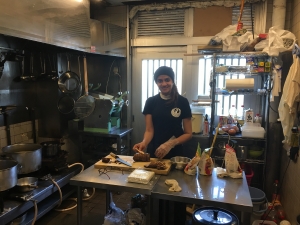Why Japanese Sushi Chefs Use Wooden Hangiri Sushi Rice Bowls?
May 24th 2020 Updated
What are the wooden bowls used to make sushi rice in sushi restaurants called?
If you ask a Japanese sushi chef some may call it Handai(飯台), others Hangiri(飯切り) or Sushi Oke(寿司桶) and they would all be correct. Different chefs call it by different names, so remembering these three terms will be useful for working with Japanese chefs.
Why is a Wooden Bowl Best?
Hangiri (we’ll refer to it as Hangiri for the rest of the article), are often individually crafted using traditional techniques with wood from trees grown in the mountains, such as Sawara or Hinoki cypress.
Therefore, they are not cheap. Even so, there are three main reasons why Japanese sushi chefs like to use Hangiri in pursuit of delicious sushi rice.
1. Water absorption
Being highly absorbent, Hangiri absorb any excess water and this absorbed water helps keep the rice moist and prevents the rice from drying out, creating perfect sushi rice with just the right level of hydration.
2. Smell
The gentle scent of the wood goes well with rice and doesn’t interfere with the aroma of sushi rice.
3. Antibacterial
Wood such as Sawara or Hinoki cypress have antibacterial properties, so you can have peace of mind when it comes to hygiene.
For these reasons, wooden Hangiri are used by chefs. This is also why rice paddles are wooden.
Photos from Tokyo Sushi Academy English Course
How to Care for Hangiri
While it depends on the restaurant, hangiri are usually washed with cold or hot water after use and wiped and left to dry. Avoid direct sunlight when drying. Use mild kitchen detergent only.
Unpainted wooden products will eventually lose their original color and luster and gradually darken over time. To bleach, wet it with water and scrub using lemon juice and salt.
What if the Hoop Comes Loose?
The hoop around the Hangiri holds the bowl together and is made of copper or stainless steel. Wood expands when it absorbs moisture and contracts when it dries. Therefore, the hoop may loosen during the dry winter season. If the hoop loosens or detaches, turn it upside down and gently tap it down with a hammer until it fits back into its proper place.
After it’s been returned to the correct position, douse it with water and it will fit snugly back into place.
What Size?
What size should you buy if you’re wanting to make sushi rice with a Hangiri?
If the Hangiri is filled to the brim with rice, there won’t be enough room to properly stir in the sushi vinegar. An appropriate amount would be filling the Hangiri half way. The larger the Hangiri (outer diameter), the more sushi rice can be made at one time.
In Japan, rice is measured in “Go(合)”, with 10 Go(合) equaling 1 “Sho(升)”.
In the case of an average Hangiri with an outer diameter of 27cm and a height of 10cm, use 2 Go. For a 39cm Hangiri, 10 Go (1 Sho) and for a 60cm Hangiri, 40 Go (4 Sho).
These Japanese measurements may be confusing, so we’ve listed the grams as well in the following table. The amount of rice is based on the weight before cooking.
After the rice has been cooked and absorbs water, the weight will be about 2.3 times heavier.
For reference, you might check the weight of the cooked rice, too.
The price of a Hangiri with an outer diameter of 27 – 60 cm will depend on the quality of the wood, but the average price in Japan is around 3,000JPY(28USD) – 25,000JPY(230USD) + 10% tax.
Place the Sushi Rice into a “Ohitsu”
Have you ever seen a wooden tub on the counter at a sushi restaurant that contains the sushi rice before the chef begins shaping it by hand?
This is called “Ohitsu”, not Hangiri.
Before the chef begins shaping, sushi rice in a wooden tub with a lid is passed by a younger staff member to the sushi chef at the counter.
The optimal temperature is believed to be 37 degrees Celsius, or body temperature.
By keeping it in an Ohitsu, the rice can be kept warm and moist, essential for the final sushi product.
You might be surprised at this level of attention to the temperature, but the more fancy the restaurant the more they tend to pay attention to the temperature of the rice and sushi toppings.
Some restaurants make 3 different types of sushi rice depending on the sushi topping, adjusting the temperature to either 50 degrees, 40 degrees or 35 degrees.
Where Can You Buy Hangiri, Shamoji (Rice Paddles) or Ohitsu?
There are suppliers of kitchen tools for Japanese cuisine in North America and Europe and you should be able to find them by searching on Google.
If you’re looking to buy at a reasonable price in Japan, we’d recommend going directly to Kappabashi near Asakusa, Tsukiji or Doguyasuji Shopping Street in Osaka, districts lined with shops selling cooking utensils and other supplies.
Stores with English websites should also provide overseas shipping.
Other Uses
Hangiri is used not only when making sushi rice but also for making Chirashi (Scattered) Sushi. In the heat of summer, Hangiri can be used to display fresh seafood or to chill cooked somen noodles with ice.
It’s one of those kitchen tools that comes in handy for many things!

Culinary Schools in Japan
Tokyo Sushi Academy
The first and the most popular sushi school in the world.
Japan Culinary Institute
Japanese culinary training including sushi, kaiseki, yakitori, wagashi and more.
Miyajima Ramen School
More than 1,000 graduates from over 50 countries.
International Ramen School
Ramen study program combined with OJT

